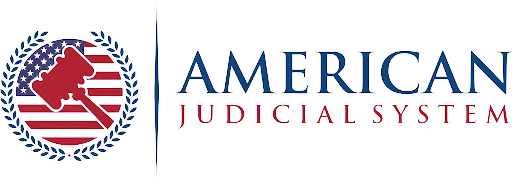Puerto Rico has experienced shifts in its approach to cannabis regulation. Local authorities and communities follow evolving legal definitions. The island’s government establishes guidelines that affect both the medical and recreational use of weed. Many individuals and analysts examine the legislation for its effects on public health, the economy, and society. Since the early 2000s, various proposals have influenced cannabis policies. Tracking these changes gives useful insight into the local framework and its trajectory.
Is weed legal in Puerto Rico?
Medical cannabis holds legal status under controlled conditions, while recreational weed remains illegal. Authorities regulate purchase, use, distribution, and possession so as to maintain public safety and health standards.
Historical Overview of Cannabis Regulation in Puerto Rico
Puerto Rico’s history with cannabis shows an evolution from strict prohibition measures toward a more regulated approach for medical use. Early policies derived from U.S. federal guidelines, which placed the substance under strict control. Law enforcement emphasized criminal penalties which affected communities and sparked debates among local residents and policymakers alike.
In the early 2000s, shifts in international perspectives on cannabis prompted new legislative proposals. Lawmakers began discussing the benefits of controlled medical usage and possibilities for economic growth via regulation. These discussions led to the establishment of systems that allowed registered users to access medical cannabis. Public hearings and consultations paved the way for formal discussion about penalties, patient registration, and quality control.
Over the years, activists and medical professionals provided data supporting regulated access. Reports documented benefits such as reduced opioid dependency among chronic pain sufferers and additional revenue sources. The transformation in policy mirrors wider changes seen in some U.S. states and territories. Local medical professionals observed improved patient outcomes and fewer adverse incidents when cannabis was used as an adjunct treatment in chronic illnesses.
Key milestones in the historical timeline include:
- The introduction of legislation permitting research into therapeutic uses of marijuana.
- The passage of measures allowing licensed dispensaries to operate under regulated conditions.
- Ongoing debates regarding potential paths toward broader legalization.
These documented shifts factor into current policymaking decisions and influence community sentiment. Legal experts and social commentators agree that regulation reflects a balanced effort to protect public health while exploring economic opportunities.
Current Legal Framework and Regulations
The current legal framework in Puerto Rico differentiates between medical cannabis and recreational usage. Medical cannabis requires patient registration with the Puerto Rico Department of Health. Registered patients must meet strict criteria, including proof of chronic or debilitating conditions. State-approved products fall under rigorous quality control and distribution channels.
Aspects of the regulatory framework include:
- Licensing requirements for cultivators, manufacturers, and dispensaries.
- Statutory limits on possession and transport of cannabis.
- Strict packaging and labeling rules ensuring product consistency.
- Mandatory reporting of product testing results to relevant authorities.
Medical cannabis is available only through authorized providers. Although many patients find relief through the program, some groups and lawmakers advocate for broader decriminalizing initiatives. Lawmakers have maintained a cautious approach regarding recreational use. Despite legislative proposals, recreational cannabis remains classified as a prohibited substance under local law. Violations can expose individuals to fines and criminal records.
The authorities maintain oversight through regular audits of licensed businesses. Inspections occur to assess product integrity, adherence to safety guidelines, and compliance with distribution policies. The system fosters confidence among patients and the community while ensuring the integrity of the licensing process. Analysts view this framework as a necessary balance among public health considerations, economic aspirations, and social order.
Regulatory Bodies and Enforcement Mechanisms
Multiple agencies monitor cannabis compliance in Puerto Rico. The Department of Health and the Office of Cannabis Regulation supervise aspects such as production, distribution, and safe consumption practices. Collaboration across agencies ensures that the laws are applied consistently and impartially.
Local police and federal agencies also play roles. Coordination between local and federal authorities maintains oversight over border control, marketing disputes, and overall public safety. Law enforcement holds discretion to enforce penalties for unauthorized production and distribution. Training programs for officers highlight the nuances of cannabis laws and encourage sensitive application of the rules.
Product testing laboratories, which several local universities now support, help ensure that cannabis supplied for medical purposes meets established quality criteria. Certified labs analyze samples for contaminants such as pesticides, heavy metals, or microbial agents. This approach protects patients and supports informed consumer choices.
Data collection systems monitor the number of licensed dispensaries, the volumes of distributed products, and the frequency of noncompliance citations. These records assist policymakers in understanding the market’s demands and inform potential adjustments to the existing legal framework.
Public Opinion and Community Impact
Public attitudes shape the debate about weed legislation. In Puerto Rico, surveys suggest that a growing segment of citizens show willingness to endorse broader access to cannabis. Community organizers and health advocates share personal narratives detailing how the regulated program has improved lives. Researchers compare the experiences in Puerto Rico with those in other territories that have legalized recreational use.
Public forums and seminars educate residents on the nuances of current regulation and the risks associated with unlicensed channels. Some citizens highlight that the existing laws represent both a health and a social experiment. Observers note that debates on cannabis often reflect deeper conversations about criminal justice, public health, and individual freedoms.
A recent public survey commissioned by a local research institute showed that approximately 62% of respondents supported the expansion of medical cannabis access. In contrast, 28% endorsed the continued prohibition of recreational use in its current form, while a small minority favored total decriminalization. These statistics guide civic discussions and motivate further study into the sectors most affected by current policies.
Table 1 below provides a snapshot of cannabis-related data in Puerto Rico over recent years:
| Year | Registered Medical Cannabis Patients | Licensed Dispensaries | Reported Cases of Illicit Possession |
|---|---|---|---|
| 2018 | 6,200 | 12 | 180 |
| 2019 | 8,500 | 15 | 150 |
| 2020 | 11,000 | 18 | 130 |
| 2021 | 14,300 | 22 | 100 |
| 2022 | 16,800 | 25 | 90 |
This table provides figures that local authorities and stakeholders reference during policy discussions. The data show an upward trend in registered users and licensed outlets, while cases of illicit possession decline. Observers view these figures as indications of the program’s efficiency and growing public acceptance.
Local advocacy groups participate in regular roundtable discussions with officials. These sessions generate proposals to enhance patient support, streamline licensing procedures, and expand educational programs. Participants stress that access to high-quality medical cannabis supports public health goals and reduces reliance on unregulated suppliers.
Medical Uses and Health Considerations
Medical professionals in Puerto Rico acknowledge cannabis as an adjunct treatment for conditions including chronic pain, nausea linked with chemotherapy, and neurological disorders. Dr. Alejandra Rivera, a licensed practitioner in San Juan, explains that registered patients in the program experience improvements in quality of life and pain management. She emphasizes that prescriptions accompany careful dosage guidelines to minimize adverse effects.
Research conducted at local institutions compares patient outcomes before and after enrollment in the program. Studies indicate that patients using medical cannabis as prescribed report fewer side effects from other medications and experience marked improvements in daily functioning. Controlled clinical trials examine dosage, interactions with other medications, and the long-term effects on quality of life.
Local clinics offer guidance sessions that explain the differences between various cannabis products. These sessions discuss differences in cannabinoid profiles and their potential therapeutic impacts. For example, products high in cannabidiol (CBD) but low in tetrahydrocannabinol (THC) suit patients needing pain management without psychoactive consequences. Experts monitor ongoing clinical trials funded by local healthcare institutes and consult peer-reviewed studies to adjust treatment protocols.
Quality control measures limit the potency of available products to reduce the risk of misuse. Testing laboratories identify contaminants and verify that products comply with established potency limits. Laboratories provide detailed analytical reports, which serve as a public resource on product safety. This practice reinforces the central regulation’s emphasis on health and safety.
Statistical data from medical facilities reveal that over 75% of enrolled patients report improvements in at least one symptom linked to conditions such as multiple sclerosis, arthritis, or epilepsy. Physicians continue to adjust guidelines as new findings emerge from clinical trials. The benefits, in many cases, support the practice of regulating cannabis through a controlled medical program.
Economic Considerations and Market Opportunities
The current legislative structure creates a regulated market that supports local businesses and provides employment. Licensed dispensaries create revenue channels and offer jobs to residents. Small enterprises specializing in cultivation, product testing, and distribution benefit from adherence to the legal framework. Economic impact studies indicate that the medical cannabis sector contributes to both state revenue and local job creation.
A report published by the Puerto Rico Economic Development Bank shows that the medical cannabis sector contributed an estimated $65 million in economic activity in 2021. Job creation ranged across various sectors including agriculture, manufacturing, research, and retail. Market regulators maintain revenue distribution models that benefit local communities. In addition, research initiatives connected to the industry receive funding from public and private sources.
Innovative business models emerge within this regulated space. Licensed producers invest in sustainable cultivation and organic production methods to ensure long-term viability. Studies note that initiatives encouraging eco-friendly practices have attracted attention from environmental groups and consumers alike. Further research explores the potential for cannabis-infused products to support ancillary markets, including wellness and beauty sectors.
Table 2 compares the legal status and regulatory approaches toward cannabis in several Caribbean nations:
| Territory | Medical Cannabis Legal | Recreational Use Legal | Year of Medical Legalization |
|---|---|---|---|
| Puerto Rico | Yes (regulated) | No | 2015 |
| Jamaica | Yes (regulated) | Decriminalized | 2013 |
| Dominican Republic | Limited | No | N/A |
| Cuba | Experimental | No | N/A |
| Bahamas | No | No | N/A |
The table highlights that Puerto Rico aligns with other territories allowing regulated medical cannabis while maintaining prohibitions on recreational use. Differences in year of legalization further emphasize the varying approaches across the region. Financial incentives, patient safety programs, and regulatory oversight remain priorities in Puerto Rico’s strategy.
Entrepreneurs express optimism regarding expansion within the regulated market. Legal clarity creates opportunities for partnerships with academic institutions to explore improved cultivation techniques and product innovations. Business incubators sometimes support start-ups in medically focused production. Economic forums invite local and international experts to discuss best practices for sustained growth in a competitive market.
Local regulators continue to monitor market performance indicators. Regular surveys and audits ensure that product quality remains high and that operations align with statutory requirements. Business owners provide feedback on licensing procedures, regulatory fees, and logistical challenges. This continuous feedback process refines the regulatory framework and keeps market operations transparent.
Risks, Penalties, and Legal Considerations
While the medical cannabis program offers clear benefits, risks remain for those who violate current guidelines and unlicensed activities. Disparities between local and federal frameworks generate challenges in enforcement. Even though federal law still classifies cannabis as a controlled substance, local authorities maintain discretion for medical use.
Law enforcement applies penalties for unauthorized production, distribution, and possession. Penalties vary depending on quantities involved and whether the violation indicates ongoing criminal behavior. Penalties range from fines to incarceration for severe cases. Registered patients gain legal protection when they adhere to established rules and use products licensed by local authorities.
Recent audits reveal reductions in minor offenses related to unlicensed possession. Data from local judicial offices indicate that enforcement actions focus primarily on large-scale operations suspected of supplying the illicit market. Detailed case studies publish analysis of recurring violations and outline patterns recognized by judiciary panels. Judicial experts occasionally convene panels to review legislative adjustments that balance patient access rights with public safety concerns.
Local legal practitioners encourage individuals to verify their provider’s licensing credentials before purchasing any cannabis products. Clinics offer free legal consultations to patients unfamiliar with the laws. Academic centers host seminars that clarify patient rights and responsibilities under the current legislation. These sessions help prevent accidental legal violations and assist in navigating complex documentation procedures.
Authorities maintain several hotline numbers and web portals where citizens report suspect operations. Public awareness initiatives inform residents about safe practices and legal sourcing. Community groups collaborate with legal professionals to offer guidance on potential risks. The objective remains to foster a system that discourages abuse while protecting public health and encouraging lawful commerce.
Social Impact and Community Developments
Cannabis policies affect several aspects of community life. Registered patients share experiences that frequently detail pain relief and improved daily activities. Family members talk about improved quality of life when loved ones receive help through medically prescribed cannabis. Community councils sometimes allocate resources to programs that provide support services such as transport to licensed dispensaries and patient education sessions.
Local media cover personal testimonials and investigative reports on how existing law affects individuals. Independent researchers undertake surveys that track changes in public health metrics and report on decreases in opioid dependency levels. Responses from the community often guide modifications to service delivery models and support fundraising for patient care programs.
In neighborhoods where the medical cannabis program becomes active, local entrepreneurs partner with community organizations. Business owners invest in infrastructure improvements that benefit both the company and surrounding neighborhoods. Schools and community centers host discussions on the responsible use of prescribed cannabis, fostering an atmosphere of open dialogue among residents.
Citizens express concerns about potential increases in unlicensed cannabis activities. Officials counter these concerns by demonstrating that robust licensing and strong oversight maintain market integrity. Community leaders recommend safe practices and verify that all medical cannabis transactions proceed through licensed channels. Supporting local research provides unbiased insight into trend assessments and public health outcomes.
Local organizations contribute to a robust monitoring system by collecting data from various sources, including law enforcement, health clinics, and educational seminars. Collaborative research generates insights into usage patterns, risk factors, and long-term outcomes associated with regulated cannabis. Reports suggest that comprehensive public support networks help improve patient adherence to dosage guidelines and reduce risks associated with abuse.
The societal impact varies among different demographic groups. Young adults, who traditionally show higher willingness to explore alternative therapies, often align with public health campaigns explaining the proper use of cannabis. Seniors and chronic patients value the regulated environment that minimizes exposure to unverified products. Academic surveys track differences in attitudes across age groups and socioeconomic statuses, offering valuable insights for lawmakers.
Community groups frequently compare their experiences with those in other regions of the United States and the Caribbean. Surveys and focus groups reveal positive views on the public health benefits assigned to regulated cannabis use for medical purposes. The evidence gathered influences subsequent policy recommendations and fosters a balanced approach that considers diverse perspectives while maintaining guidance based on safety and well-being.
Research, Innovation, and Academic Contributions
Higher education institutions in Puerto Rico lead research concerning cannabis’s potential benefits and possible side effects. Several universities collaborate with local healthcare providers to design clinical studies examining the long-term effectiveness of cannabis-based therapies. These initiatives implement rigorous scientific protocols and controlled testing environments that generate reliable data.
Researchers focus on identifying the optimal ratios of CBD to THC for treating conditions such as chronic pain and anxiety. Laboratory work supports clinical findings by isolating compounds and testing them for therapeutic potential. Research teams publish findings in peer-reviewed academic journals, contributing to the island’s growing reputation as a center for cannabis studies.
Academic institutions organize conferences that invite both local practitioners and international experts to present their findings. Workshops, symposia, and training sessions feature discussions on dosage, formulation, and patient safety. These events allow medical professionals, researchers, and regulated industry operators to exchange experiences and discuss emerging research trends.
The academic community emphasizes the need for continuous data collection and analysis to support policy adjustments. Institutions maintain data registries that track patient outcomes, adverse events, and market statistics from licensed operations. These registries frequently include anonymized patient surveys and clinical responses to various treatments. Among researchers, continued innovation in cultivation techniques and processing methods remains a priority.
Government agencies support academic research to update regulatory guidelines. Agencies establish oversight committees that include representatives from local universities, community organizations, and law enforcement. These committees review new findings and propose amendments to existing regulations when data show clear improvements or emerging risks.
Research drives policy refinement by offering concrete evidence from controlled studies and field observations. This cooperation between academia and the government provides a stable foundation for evaluating proposed changes to the legal framework. Policymakers remain responsive to scientific findings and adjust rules based on reliable data rather than unverified opinions.
Future Prospects and Potential Changes
Although recreational use remains illegal, discussions on the broader implications of cannabis decriminalization surface during legislative sessions and public debates. Lawmakers sometimes sponsor exploratory bills that examine alternative regulatory models. Local advocacy groups maintain discussions with policymakers to assess whether expanding regulated access benefits public health and the local economy.
Surveys indicate that the majority of Puerto Rican citizens favor gradual policy changes that extend legal access while preserving public safety. Legislative proposals include increasing the number of licensed dispensaries, expanding the list of qualifying conditions for patients, and funding additional research programs. Lawmakers hold public meetings to gather input and adjust proposals based on community feedback.
Identified trends in other regions provide guidance for potential modifications. Analysts note that experiences in states with legalized recreational cannabis offer learning opportunities. Observations focus on balancing consumer safety, tax revenues, and enforcement measures. These comparative studies help local decision-makers consider caution when drafting new policies.
Future changes likely center on reducing barriers for patient access while reinforcing quality control measures. Digital platforms increasingly support patient registration, and online educational resources help clarify evolving policies. Policymakers contemplate reducing bureaucratic complexity so that patients access treatments without excessive administrative burdens. In this light, the regulated framework appears flexible enough to incorporate gradual changes while safeguarding essential requirements.
Public consultations highlight both supportive trends and concerns about potential misuse. Workshops and community forums allow residents to voice their opinions and influence decision-making. Law enforcement representatives participate in these dialogues to explain practical limitations and accountability measures essential for a functioning system. The iterative nature of policy refinements suggests that local law can respond to emerging trends and influence subsequent economic developments.
Economic impact evaluations represent another dimension of future prospects. Studies project that expanding licensed operations could attract domestic and international investments, strengthening the local economy. Detailed economic models forecast higher job creation rates, increased tax revenues, and supplementary benefits for local infrastructure projects. Experts recommend that incoming legislative proposals incorporate safeguards to balance innovation, industry growth, and community health.
Comparative observations indicate that successful models from other regions must adapt to the unique cultural, economic, and social context of Puerto Rico. As researchers continue to collect data and share experiences, local models evolve. These continuous adjustments foster an environment where both patients and regulated businesses operate within defined parameters. The system remains robust and adaptable, reflecting a commitment to public welfare and prudent market practices.
Legal Debates and Stakeholder Viewpoints
Discussions about cannabis laws attract varied opinions from different sectors of society. Legal experts present perspectives on the consistency of local laws with federal standards, while public health officials stress the significance of medically driven data. Several panels invite stakeholders from law enforcement, healthcare, and business sectors to voice practical experiences with the regulated system.
Critiques of current policies sometimes focus on the discrepancy between local and federal classification. Academic legal reviews compare Puerto Rico’s approach to broader U.S. trends, noting that while medical use meets established protocols, recreational use remains strictly regulated. Some legal scholars call for harmonizing local statutes with federal reforms that provide clearer guidelines on cannabis classification. Discussions in public forums vary from conservative to liberal approaches regarding substance regulation. In all these debates, stakeholders agree on the necessity for clear guidelines that maintain public safety and support patient access.
Local business owners express concern over a regulatory burden that might hinder economic opportunities. They seek more streamlined processes for application and expanded licenses that allow increased production capacities. Business representatives often share success stories from licensed dispensaries and cultivation centers. Their contributions serve as tangible examples of how effective regulation underpins sustainable economic growth. Meanwhile, community advocates emphasize the need for patient protections and effective monitoring of product safety.
Public health officials stress the correlation between regulated access and decreased reliance on the informal market. They reference medical data that shows improved outcomes when patients follow prescribed treatment plans. Law enforcement representatives note that well-regulated markets reduce criminal activities associated with unlicensed production. These viewpoints converge on the principle that a transparent and diligently managed regulatory system benefits all parties.
Councils and committees from diverse sectors review ongoing legal cases and research findings. Meetings frequently result in incremental adjustments rather than sweeping changes. Stakeholders maintain a dialogue that ideally influences legislative amendments in a manner respectful of historical contexts and current needs. In these discussions, the primary objective remains balancing individual liberties with community welfare, economic stability, and public health protection.
International Comparisons and Lessons Learned
Observers compare Puerto Rico’s cannabis regulatory model with those in other nations and territories. Comparative studies examine how policies impact public health rates, economic growth, and law enforcement activities. Some Caribbean neighbors, for instance, have pursued alternative strategies that stress decriminalization rather than strict prohibition. These comparisons generate important insights for stakeholders and lawmakers navigating the current legal framework.
Academic studies compile a range of metrics including patient satisfaction surveys, economic impact data, and public safety records. These analyses highlight that policies tailored to local needs yield better results than one-size-fits-all approaches. Legal scholars reference the gradual expansion of cannabis laws in other regions to support proposals for increased patient access in Puerto Rico. Economic reports compare tax revenue generated from regulated cannabis sales in various jurisdictions. Stakeholders incorporate such data to facilitate discussions and modify local regulations.
International organizations occasionally host seminars to discuss best practices from regions that have managed cannabis legalization successfully. Presenters share case studies and empirical evidence showing lower public health risks and economic gains under well-monitored conditions. Panel discussions include experts from regions with mature regulatory markets, and their experiences offer valuable lessons. Local decision-makers consider these lessons when evaluating potential adjustments to Puerto Rico’s framework.
A comparative table, presented earlier in this report, provides an overview of cannabis policies across several Caribbean territories. Stakeholders review these tables and other datasets to aid their policy recommendations. Academic experts stress that countries and territories operate under different cultural and economic conditions while drawing on similar principles of quality control, public safety, and regulated access. The similarities reassure local regulators that expanding medical cannabis programs does not inherently lead to adverse social outcomes when robust safeguards remain in place.
International comparisons also highlight the importance of aligning local practices with broader global standards. Participation in international conferences and bilateral agreements enables local experts to stay informed on emerging trends and technological innovations. Such engagements promote confidence in local regulatory strategies while fostering an environment of shared learning and improvement. The experience from other regions informs internal debates and may influence future legislative drafts.
Legal analysts and business experts remain attentive to changes in regional practices. Their reviews focus on developing regulatory frameworks that safeguard public health, support economic development, and provide efficient law enforcement practices. These reviews contribute to a steady progression of policy changes that reflect accumulated experiential knowledge from around the globe.
Future Research Priorities and Policy Development
Ongoing studies contribute valuable information for improving cannabis regulations in Puerto Rico. Researchers continue to track patient outcomes, economic developments, and enforcement metrics. Data-driven studies provide policymakers with reliable evidence when considering amendments to existing regulations. Academic institutions, laboratories, and government agencies coordinate efforts to monitor trends and publish findings.
Planned research includes evaluating long-term impacts of medical cannabis on chronic pain management, economic contributions to local communities, and measures of public safety in neighborhoods hosting licensed dispensaries. Collaborative efforts involve multiple departments that share data via centralized platforms. Research committees review annual reports on the performance of licensed businesses and patient safety incidents. Findings feed into public discussions and legislative committee meetings tasked with reviewing policy directions.
Future policy development centers on incorporating research findings into actionable guidelines. Lawmakers plan regular reviews of registration numbers, clinical outcomes, and compliance rates. Policy drafters rely on forensic analysis from quality control laboratories to precisely adjust product potency standards and safety protocols. Input from community representatives, law enforcement officials, and industry stakeholders generates recommendations that reflect diverse experiences.
Several initiatives anticipate technology integration into the regulatory framework. Digital tracking systems for patient registrations and product movements simplify administrative tasks. Online resources verify that businesses meet license requirements and encourage self-reporting of incidents. Platforms manage data transparently and support communication between government agencies and local enterprises. The adoption of technology assists in maintaining an efficient, transparent, and accountable system and promises to reduce administrative challenges that previously slowed the process of policy adjustments.
Workshops and training sessions educate industry participants on updated practices and compliance standards. These sessions target dispensary managers, law enforcement officers, and legal advisors. They share detailed procedures for reporting, auditing, and dispute resolution. Educational materials, printed and digital, help clarify common queries about tax filings, licensing renewals, and patient rights. Such initiatives appear essential for continuously improving the regulated framework.
Policy development committees incorporate multiple rounds of public consultation. Summaries of academic research, enforcement practices, and community feedback assist in shaping proposals that receive broad support. Continuous dialogue among stakeholders strengthens the legitimacy of new policies. As data accumulates and officials gain experience, additional adjustments appear likely. Proposed modifications undergo thorough review sessions where technical experts, businessmen, and civic groups offer their perspectives.
The Broader Impact on Public Health and Society
The significance of regulated cannabis extends beyond legal and economic discussions. A functioning system ensures that patients receive safe access to therapies that improve daily life. Robust data collection from healthcare providers documents that many users experience tangible benefits. Indicators show that robust patient guidance reduces misuse and other risks associated with cannabis consumption.
Healthcare institutions collaborate with regulated dispensaries to inform patients about safe use protocols. Patients attending informational sessions gain clarity on best practices, dosage options, and potential drug interactions. Training programs continue to update medical professionals on evolving research findings. Reliable data from clinical reviews support assertions that medical cannabis, when administered appropriately, benefits many individuals suffering from chronic conditions.
The system also influences social attitudes. As regulated access becomes a part of the community, stigma associated with cannabis use decreases. Educational campaigns in schools, community centers, and online platforms share evidence-based information about the substance. Public forums feature patient testimonials and expert panels that address apart of common misconceptions. Such efforts promote a more informed perspective on cannabis use and its role in managing health conditions.
Family members of patients note improvements in quality of life and overall well-being when a controlled, medically regulated environment exists. Community surveys indicate that many residents view regulated cannabis as a positive step toward modernizing healthcare practices. Local media, including newspapers and radio programs, cover developments in cannabis regulation, making information widely available. These practices help foster an atmosphere where patient experiences matter, and where policy modifications reflect practical realities.
Economic factors, legal stability, and improved healthcare outcomes all intertwine within the regulatory framework. Data from multiple sources demonstrate a consistent picture of progress in managed cannabis programs. Statistical trends point to higher rates of patient satisfaction and reduced involvement of illegal operators. The coordinated efforts of healthcare professionals, law enforcement, business leaders, and academic researchers produce outcomes that benefit society at large.
Public resources, including government websites and community centers, offer updated information on regulatory changes and patient guidelines. Public information desks provide assistance to those seeking guidance on legal compliance. Research institutions publish annual reports summarizing progress and challenges. Collaborative publications that incorporate multiple data sources contribute to transparency and foster public trust in the regulatory process.
Stakeholders continue monitoring the long-term impact on different sectors of society. Ongoing projects compare changes in healthcare outcomes with economic performance indicators. Detailed audits track public safety statistics in areas adjacent to licensed dispensaries. These efforts generate abundant data that serve as a foundation for future legislative improvements.
Final Reflections on the Legal Status of Weed in Puerto Rico
The legal questions regarding weed in Puerto Rico generate discussion among patients, practitioners, and legal authorities. The existing regulatory framework authorizes medical cannabis under strict guidelines while maintaining a prohibition on recreational use. This controlled model draws on historical experiences, current data, and ongoing research. Public opinion, academic input, and business feedback drive adjustments aimed at promoting safety, economic stability, public health, and social harmony.
Puerto Rico’s experience serves as an example of how a structured legal framework can benefit communities when regulations align with detailed research and data. Continuous monitoring, dialogue among key stakeholders, and targeted research inform the future course of cannabis legislation. With pharmaceutical, economic, and social factors in mind, the island proceeds with caution by maintaining patient access while imposing measures to prevent unregulated activities. Regular audits, transparent data collection, and active community engagement offer a stable foundation for further regulatory advancement, ensuring that patient needs and public order prevail.
Stakeholders remain committed to balancing the concerns of public health and economic opportunities through credible data and fair procedures. Careful attention to reporting, auditing, and educational support helps shape regulatory adjustments that address emerging challenges. The ongoing evolution of cannabis regulation in Puerto Rico highlights the importance of continuous learning and adaptation in a complex field of law, health, and commerce.
Recent observations confirm that the regulated medical program improves quality of life for registered patients, reduces incidents related to unlicensed operations, and promotes an informed community perspective on cannabis use. As research expands, emerging data will further clarify the benefits and challenges faced by society. Citizens, business owners, healthcare professionals, and law enforcement officials work together to ensure that the legal framework remains dynamic and suited to local needs. The documented progress provides valuable insights for other regions contemplating similar measures while underscoring the importance of a well-managed, evidence-based approach.
Puerto Rico’s regulated cannabis system illustrates how careful policy design can address diverse societal needs. Continuous improvements in research methodologies, economic strategies, and patient safety measures maintain public trust in the framework. Each update to the legal structure draws on evidence and community insight, ensuring that the process remains transparent and effective. As local authorities integrate feedback from multiple sectors, the island’s approach to cannabis regulation continues to adjust responsibly over time.
This report presents detailed information on the legal status of cannabis in Puerto Rico and elaborates on the factors influencing public policy, economic opportunities, and health outcomes. Readers gain an in-depth view of historical shifts, regulatory measures, and future trends that shape the current framework. Through careful analysis of data, community feedback, and ongoing research, the discussion emphasizes a well-managed approach that benefits patients, businesses, and the broader community.










